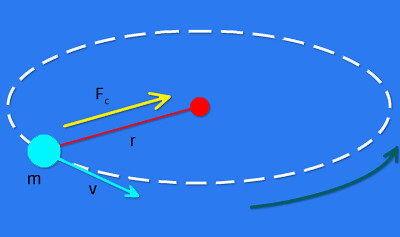In previous blogs, I discussed Kepler's first and second laws of planetary motion. In this blog, I will be discussing Kepler's third law of planetary motion.
Statement: "The ratio of the square of the orbital period of objects to the cube of the semi-major axis is the same for all objects orbiting the same prime celestial body.
T12/R13= T22/R23 = T32/R33 or vice versa
R13/T12 = R23/T22
= R33/T32
 |
| Different Elements of Ellipse |
For example, if you take the sun as being a prime celestial body orbited by objects that are planets like Mercury, Venus, Earth, and Mars.
|
Planets |
Average distance from the Sun during a complete
revolution (In Astronomical Unit) |
Time Taken for a complete revolution (In Earth days) |
|
Mercury |
0.387 |
87.969 |
|
Venus |
0.723 |
244.700 |
|
Earth |
1 |
365.256 |
|
Mars |
1.523 |
686.979 |
0.3873/87.9602 =0.7233/244.72
= 13/365.252 = 1.5233/686.9792 = 7.49*10-6
AU3/days2
ma = GMm/ R2
mv/ T = GMm/ R2
mv2/R = GMm/ R2 (by multiplying and
dividing LHS by v)
m (R w)2/R = GMm/ R2 (by v = Rw)
mR(2pi/T)2 = GMm/ R2
T2 = 4pi2R3/GM
T2 proportional to R3
In conclusion, Johannes Kepler's Third Law of Planetary Motion has left an indelible mark on our understanding of celestial mechanics. By establishing a precise relationship between a planet's orbital period and its distance from the sun, Kepler provided a crucial bridge between the observations of Tycho Brahe and the groundbreaking insights of Sir Isaac Newton. This law, often referred to as the Law of Harmonies, laid the groundwork for Newton's Universal Law of Gravitation and paved the way for the modern understanding of how celestial bodies move in space. Kepler's Third Law remains a testament to the power of empirical observation and mathematical rigor in advancing our knowledge of the cosmos.


Comments
Post a Comment